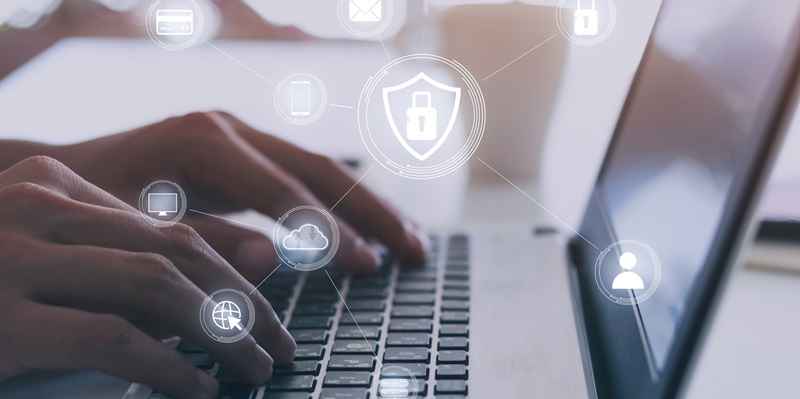In today’s rapidly evolving digital landscape, organizations are facing an alarming gap between their security exposures and their ability to effectively manage them. Recent studies have highlighted that a substantial 82% of companies have reported an increase in this gap, raising concerns about the overall cybersecurity posture and resilience of these organizations. This article aims to delve into the root causes of this issue and explore the importance of tailored remediation solutions to address the specific threat types faced by organizations.
The root cause: Lack of an appropriate remediation solution
The lack of a suitable remediation solution tailored to the unique threat landscape faced by organizations is identified as the primary cause for the widening security gap. Organizations often struggle to keep up with the constantly evolving threat vectors and sophisticated tactics employed by threat actors. As a result, their existing security measures may not effectively mitigate or respond to these emerging threats. This realization highlights the crucial need for organizations to invest in robust remediation solutions that are adaptable and agile enough to address the specific security challenges they face.
Increasing commitment to remediation efforts
A positive trend emerging from recent surveys is the increased commitment organizations are showing towards vulnerability and exposure remediation. An overwhelming 87% of surveyed organizations have plans to enhance their vulnerability and exposure remediation efforts within the next year. This signifies a growing recognition of the urgency in prioritizing and addressing security gaps, with organizations actively seeking ways to strengthen their security postures.
Challenges faced by organizations
Despite the commitment to remediation efforts, organizations grapple with a series of challenges. One of the prominent hurdles is the shortage of skilled personnel and the overburdened security teams. Recent studies reveal that IT and security teams are currently engaged in remedying an average of 12 exposures per week, placing significant strain on limited resources. Addressing this shortage and providing adequate support to security teams is crucial to effectively manage security exposures.
Emerging threats and lack of automated remediation solutions
The widening security gap is a reflection of how threat actors are exploiting new attack vectors that organizations have not yet developed effective defenses against. These emerging threats often catch organizations off guard, leaving them vulnerable and exposed. The lack of automated remediation solutions further aggravates the situation, as manual efforts alone may not be sufficient to respond effectively and in a timely manner. To bridge this gap, organizations need to invest in automated remediation solutions that can proactively identify and respond to emerging threats.
Impact of outdated legacy systems
Many organizations still rely on outdated legacy systems, exacerbating the security challenges they face. These legacy systems often lack the necessary security features and updates needed to protect against modern threats. The survey suggests that addressing this issue requires a new approach that aligns older systems with emerging threats. Organizations must not only update their legacy systems but also ensure they are seamlessly integrated with their overall security infrastructure.
Separate Management of Exposures in On-Premises and Hybrid Cloud Environments
One striking finding from surveys is that nearly half of the organizations manage exposures separately for on-premises and hybrid cloud environments. This suggests a fragmented approach to cybersecurity, lacking integration and synergy. Addressing this issue calls for the adoption of more holistic and integrated cybersecurity strategies that encompass both on-premises and cloud environments. An aligned and consolidated approach is crucial for organizations to effectively manage security exposures across all digital platforms, reducing vulnerabilities and minimizing risk.
Communication and organizational alignment challenges
Effectively conveying the security posture to leadership is vital for implementing remediation efforts. Communication and organizational alignment play pivotal roles in achieving this goal. However, the survey identifies challenges in these areas, emphasizing the importance of clear and concise communication channels and fostering alignment between security teams and leadership. Effectively educating and engaging decision-makers on the implications of security exposures can help garner support and resources needed for remediation efforts.
Multiple stakeholders are pushing for vulnerability remediation
Various stakeholders, including the board of directors, management, compliance regulations, cyber insurance providers, and customer requirements, play a significant role in pushing organizations to enhance vulnerability remediation efforts. These constituents understand the critical importance of robust security practices and are driving organizations to continuously improve and adapt their security measures. Organizations need to embrace these demands and ensure compliance with industry regulations, aligning their security protocols with the expectations of these stakeholders.
Growing focus on cloud-centric security concerns
Cloud computing has revolutionized the way organizations operate, but it has also introduced new security concerns. Recent surveys indicate that 45% of organizations prioritize the cloud when enhancing their security posture. This focus highlights the significance of implementing cloud-centric security measures, such as robust access controls, encryption, and continuous monitoring, to safeguard sensitive data and mitigate risks associated with cloud adoption. Organizations must adapt their security strategies to effectively protect their assets within cloud environments.
The widening gap between security exposures and an organization’s ability to manage them is a significant concern. However, with increased commitment to remediation efforts and the adoption of tailored solutions, organizations can start to bridge the gap and fortify their security postures. Addressing challenges such as the shortage of skilled personnel, the burden on security teams, and the integration of outdated legacy systems will be instrumental in achieving this goal. By adopting a holistic approach, integrating security measures across all platforms, and effectively communicating the security posture to leadership and stakeholders, organizations can ensure they are well-positioned to navigate the complex cybersecurity landscape and protect against emerging threats.

